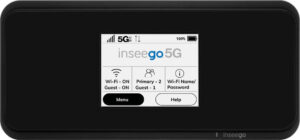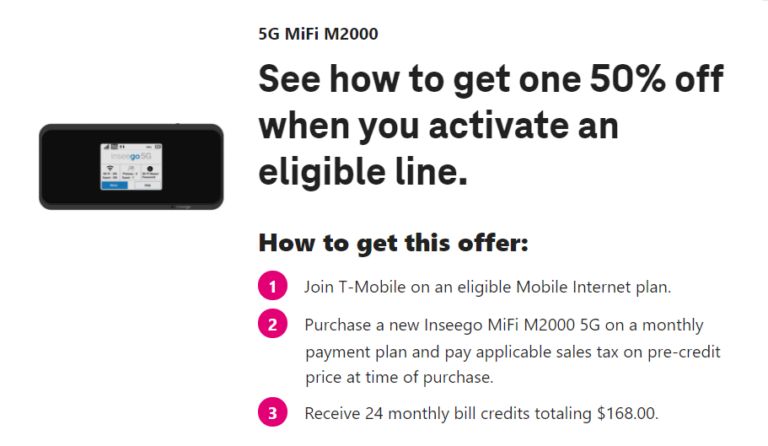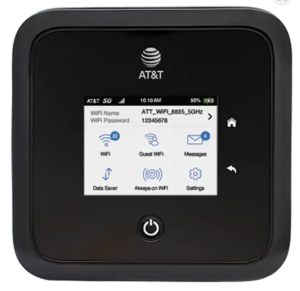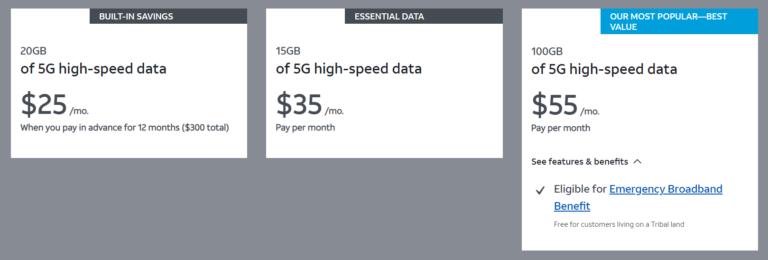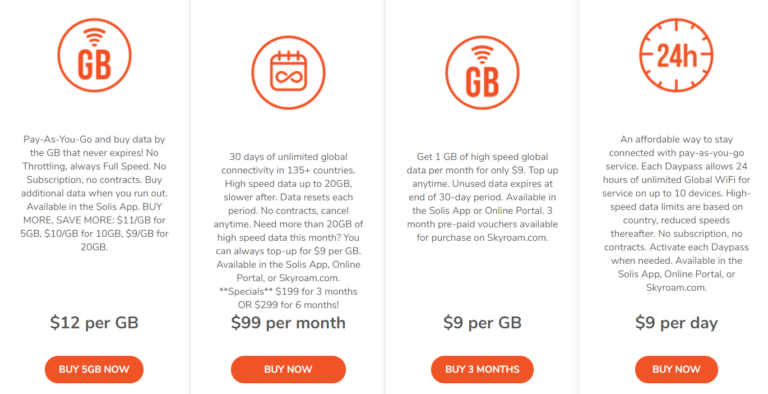We’ve done our homework and come up with a list of the best hotspot devices on each of the three big networks. We’ve also thrown in a pick for best international hotspot. Let’s jump into it.
Carrier: Most premium hotspots are tied to a specific carrier. Even for the ones that aren’t, you’ll need to buy a data plan from a cell phone company. So be sure to identify which carrier has the best coverage and performance in your area. Network type: Different network types—3G, 4G LTE, 5G etc.—use different bands or frequencies to communicate with your device. Some network types, like 5G, are much faster than others. Although 5G hotspots are pricier than others, the faster speeds and lower latency will be worth it for many people. Battery: Your hotspot is worthless if it doesn’t hold a charge. Look for a device with at least an eight hour charge. Price: Everyone’s ideal price point is different. Just remember the old adage that you get what you pay for. Number of connections: Most modern hotspots can connect to more than one device. But some can connect to 10 while others can go up to 30 or more.
So if you’re looking for a hotspot that packs a punch, T-Mobile is probably the best network to use, and the company’s 5G MiFi M2000 is the best device. Here’s everything we love about this powerful hotspot. That means you’ll be equipped to take advantage of T-Mobile’s lightning fast 5G network (it’s actually the biggest and fastest in the country). One downside (which we’ll talk about more below) is that this hotspot doesn’t support the very fastest mmWave 5G technology. However, this won’t be a problem for most people because mmWave networks are only available in small pockets of the country. Not only can you get 50% off the device itself, but you can also sign up for 100 GB of high-speed data for just $50 a month. That’s just $0.50 per GB, which is pretty darn cheap as far as mobile data goes. This means you’ll get faster data transfer, fewer connectivity issues, and a better battery life. You’ll be able to connect up to 30 devices simultaneously (that’s a lot). Of course, you’ll be able to take advantage of discounts (like the 50% off deal we mentioned above) if you sign up for a payment plan with T-Mobile. But still, that’s a lot of your hard earned money. Take a look at this coverage map to see how the network looks in your area. Most people won’t miss out here, since they aren’t covered by a mmWave network anyway. However, some folks (especially in urban areas) may be disappointed by this omission. While there are several issues that make these cheaper devices less powerful than the MiFi, the biggest difference is that they don’t support 5G. You’ll be stuck on the slower 3G and 4G networks. Here’s a closer look at everything we love about the Nighthawk 5G Mobile Hotspot Pro. T-Mobile vs. Verizon Verizon vs. AT&T AT&T vs. T-Mobile And it only costs $55 a month. Of course, mmWave 5G networks are only available in a handful of cities (and specific venues, like airports). If you live in one of these areas you’ll have an amazing hotspot experience with AT&T’s Nighthawk 5G. But it’s not just 5G that gives this hotspot its speed. It also uses Wi-Fi 6 technology for seamless and rapid data transfer. You can check out how AT&T’s 5G network coverage looks in your area by using this handy map. Let’s start with the good stuff. While this hotspot is technically capable of going up to 2.5 Gbps of speed (ludicrously fast), you’re more likely to see speeds of 30-100 Mbps (pretty fast), depending on where you are. In some rural areas your speeds could be much lower. You can get from 15-150 GB of data for $20-80. That leaves plenty of options for different kinds of users, and the 150 GB plan gives you more than T-Mobile or AT&T do on their top-tier hotspot plans. While this won’t affect most people because Verizon has such a small mmWave 5G footprint, it will be more of an issue in the future as these networks expand. This hotspot is available on a payment plan through Verizon, which will make it seem cheaper. But in the end, you still end up paying the same amount (or more). That’s just the cost of a premium 5G hotspot. Verizon’s 5G network is not the biggest or the fastest. Where it does have 5G, it’s mostly low-band, which is significantly slower than a mmWave high-band network. But the silver lining is that Verizon is sure to expand its 5G network in the future. You can peep the coverage map below to see how the carrier is looking in your area. Here’s what we like best about this device. You can see a complete list of the countries where Skyroam has coverage on the company’s website. This makes it a whole lot cheaper than any of the 5G hotspots listed in this review. The biggest cost issue with this device is the data, but we’ll talk about that more in a moment. As you may expect, Skyroam’s data prices are a bit steeper than the domestic hotspot, but we think they are pretty fair, especially when you consider the alternative. Skyroam offers four different global data options: pay-as-you-go, monthly, by-the-gig, and daily unlimited. You can see these plans below. For many, this will be fine, especially since 5G is just getting started in the US and doesn’t exist at all in many countries. People have been using hotspots with 4G speeds (think 20-60 Mbps) with no issues, for years. Because this one device connects to over 300 different cellular networks in multiple countries, it’s understandably spotty at times. You may see great 4G speeds in one area and then get sluggish 3G speeds in another. This isn’t totally Skyroam’s fault. Some areas just have worse coverage, and even if you were to get a local phone plan you’d still have issues. Check with your carrier to see if they offer international plans or add-ons, so that you can get data while you’re abroad and then tether to your computer or other device.
Inseego 5G MiFi M2000: This T-Mobile hotspot offers 5G data speeds, affordable data plans, and reliable coverage in the US. The drawbacks are the price and the lack of mmWave 5G connectivity. Nighthawk 5G Mobile Hotspot Pro: Those who want to be on AT&T’s network should be pleased with this super-powered hotspot. It can connect to high and low-band 5G and you can get a ton of data for a decent price. The biggest issue is the device’s $500 price tag. Inseego MiFi M2100 5G UW: This Verizon hotspot may look like T-mobile’s, but there are some differences. For one, this device can connect to mmWave 5G. The problem is that Verizon doesn’t really have a high-band 5G network to use in most places. Skyroam Solis Lite: This affordable hotspot can be used in over 300 different countries, although the strength of coverage varies widely from place to place. The data is a bit pricier than we’d like, but international plans have always been pricey.
We gave special weight to 5G capable devices in this article because it is the next and fastest generation of mobile technology that is becoming the new standard. We also focused on the three major US carriers—AT&T, T-Mobile, and Verizon—because they offer the most robust hotspot plans and devices.

